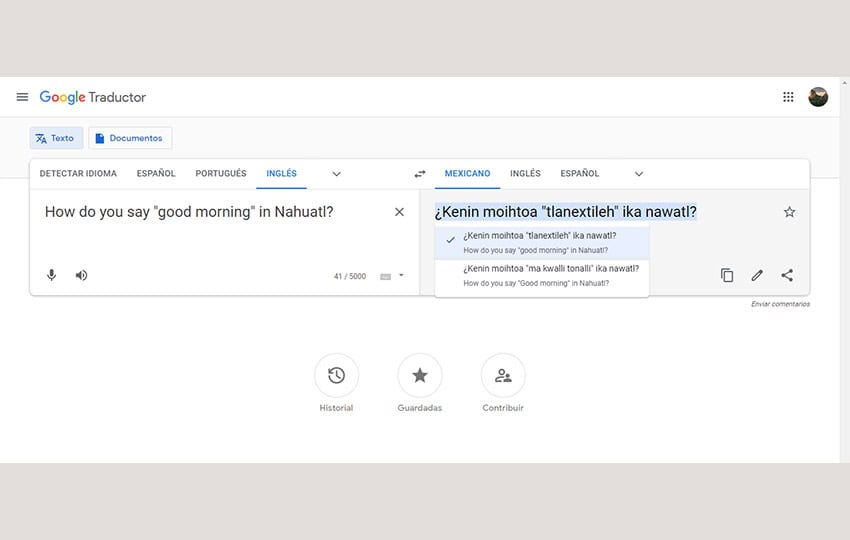Google has added 110 new languages — including Zapotec, Nahuatl, Maya Yucateco and Qʼeqchiʼ, also a Maya language — to its free Google Translate service.
Mexico is one of the most linguistically diverse countries in the world, with 68 Indigenous languages spoken in the country by 7.5 million people. However, almost 300 Indigenous languages in Mexico have already disappeared.
Machine translation is valuable in the efforts to save minority languages, which could help preserve Mexico’s Indigenous languages.
Indigenous Mexican languages now supported by Google Translate
Zapotec is an extensive language family originating in southern Mexico. There are over 50 different Zapotec languages (which belong to the larger Otomanguean language family). Mexico’s national statistics agency, INEGI, reports that a total of approximately 425,000 people speak Zapotec, primarily in the state of Oaxaca.
Nahuatl (also known as Aztec, or Mexicano) is a group of languages of the Uto-Aztecan language family. About 1.7 million Nahua people speak Nahuatl, primarily in Central Mexico.

Qʼeqchiʼ (Kekchi in many English-language contexts, such as in Belize) are a Maya people of Mexico, Guatemala and Belize. Their language is Qʼeqchiʼ.
Maya Yucateco, often simply called Maya, is spoken in the Yucatán Peninsula and parts of northern Belize. Linguists added “Yucateco” to the name in order to clearly distinguish it from all other Maya languages.
Google Translate’s latest expansion is its largest yet
In June, Google announced its plan to add 110 new languages to Google Translate, its largest expansion yet.
The expansion is part of a Google initiative to build AI models to support the 1,000 most spoken languages around the world.
“We’re always applying the latest technologies so more people can access this tool … From Cantonese to Qʼeqchiʼ, these new languages represent more than 614 million speakers, opening up translations for around 8% of the world’s population,” the tech giant said in a statement.
These languages are in different stages of usage. Some have 100 million speakers, Google noted, and some have no active speakers.
In determining which languages to provide support for in Google Translate, Google said it considers regional varieties, dialects and different spelling standards, the news site Tech Crunch reported.
A large language model called PaLM 2 powers the new expansion. PaLM 2 was pre-trained on multilingual sets of texts ranging in scope from human to programming languages, making it much more advanced than its predecessor PaLM, which used mostly English-only datasets.
Today, Google Translate supports 243 languages at various levels.
With reports from El País, Tech Crunch and The Register
